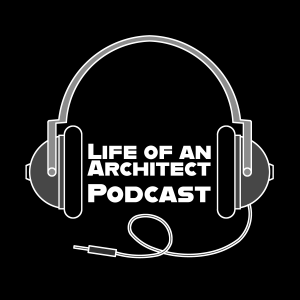
You sit down at your desk, you turn your computer on, maybe you sharpen your pencils, you lay out your rolls of trace and your sharpie pens – whatever your creative process - and you are about to start work solving the problems at hand … But where do you start? Sitting before you are all the normal tools and a big fat blank piece of paper. This is a moment where you have to make a make a decision on what happens next. Where do you start? How do you set the priorities to the issues you will be addressing? Andrew and I are going to discuss the process of when you start, what happens next. Welcome to Episode 157: Blank Page versus Project Constraints.
[Note: If you are reading this via email, click here to access the on-site audio player]
The word "constraints" often carries a negative connotation, as if they are problems we have to deal with. When starting a new project and hearing about constraints, it can feel like they are already limiting our ability to pursue our passion and creativity. However, I believe that constraints are not something to complain about. They help us make decisions, prioritize, and move forward. Constraints are like rules that guide us, almost like a how-to book.
Andrew and I both agree that having complete freedom might actually freeze us. Too many options can be overwhelming, and without any limits or rules, it’s hard to know which direction to take. Even with the same constraints, different architects can come up with multiple solutions because we all have different values and priorities. Constraints shape our creativity and force us to think critically.
Budget jump to 7:00
Scope Limitation: A tight budget can limit the overall scope of the project, potentially necessitating compromises on materials, finishes, and features.
Quality Compromises: Lower budget constraints might force the selection of cheaper, less durable materials, which could affect the building's longevity and performance.
Design Adjustments: Innovative design solutions might be required to meet budget constraints, which can lead to creative outcomes but also might limit some design aspirations.
Project Delays: Insufficient budget can lead to delays if additional funds need to be sourced or if cost overruns occur.
In my conversation with Andrew, we spent a fair amount of time talking about budget as possibly the most critical constraint that owners and architect have to address. Many architects, myself included, fantasize about the ideal scenario where there is unlimited time, budget, and creative freedom. However, I have come to realize that this notion is neither realistic nor desirable. Constraints are essential and beneficial, as they provide a necessary framework that guides the design process and helps prioritize decisions. At first glance, constraints might seem limiting, but they actually facilitate creativity and problem-solving. Constraints can include budget limitations, client requirements, existing structures, and site conditions. Andrew was of the opinion that having too much freedom could be paralyzing, with endless possibilities leading to indecision.
I used residential projects to illustrate how constraints function - mostly because it is easier to explain because residential projects typically have fewer constraints. Building a new house on an empty lot might seem closer to having a blank page, but it still comes with constraints like zoning laws and environmental regulations. On the other hand, renovations and additions have more obvious constraints due to the existing structure. However, these constraints help narrow down options and inform design choices.
Time jump to 27:14
Accelerated Schedule: Tight deadlines might require an accelerated construction schedule, which can increase costs and potentially affect the quality of workmanship.
Limited Design Development: Insufficient time can limit the design development phase,
view more
More Episodes
063: Holiday Gift Guide for Architects
 2020-11-22
2020-11-22
 2020-11-22
2020-11-22
062: The Evolving Virtual Office
 2020-11-08
2020-11-08
 2020-11-08
2020-11-08
061: Architectural Stereotypes
 2020-10-25
2020-10-25
 2020-10-25
2020-10-25
060: The Perfect Portfolio
 2020-10-11
2020-10-11
 2020-10-11
2020-10-11
057: Renovating your House
 2020-08-30
2020-08-30
 2020-08-30
2020-08-30
056: Starting A Design Firm
 2020-08-16
2020-08-16
 2020-08-16
2020-08-16
055: Scale This!
 2020-08-02
2020-08-02
 2020-08-02
2020-08-02
054: Leadership
 2020-07-19
2020-07-19
 2020-07-19
2020-07-19
053: Culture of Design
 2020-07-05
2020-07-05
 2020-07-05
2020-07-05
052: Architectural Tools
 2020-06-21
2020-06-21
 2020-06-21
2020-06-21
051: Style over Substance
 2020-06-07
2020-06-07
 2020-06-07
2020-06-07
050: Talking Shop with Marlon Blackwell
 2020-05-25
2020-05-25
 2020-05-25
2020-05-25
049: Objects of Design
 2020-05-10
2020-05-10
 2020-05-10
2020-05-10
048: Big Design / Small Details
 2020-04-26
2020-04-26
 2020-04-26
2020-04-26
047: Apps for Architects
 2020-04-12
2020-04-12
 2020-04-12
2020-04-12
046: Working From Home
 2020-03-29
2020-03-29
 2020-03-29
2020-03-29
045: Documenting Architecture
 2020-03-15
2020-03-15
 2020-03-15
2020-03-15
044: Architectural Technology
 2020-03-02
2020-03-02
 2020-03-02
2020-03-02
012345678910111213141516171819
Create your
podcast in
minutes
- Full-featured podcast site
- Unlimited storage and bandwidth
- Comprehensive podcast stats
- Distribute to Apple Podcasts, Spotify, and more
- Make money with your podcast
It is Free
- Privacy Policy
- Cookie Policy
- Terms of Use
- Consent Preferences
- Copyright © 2015-2024 Podbean.com





